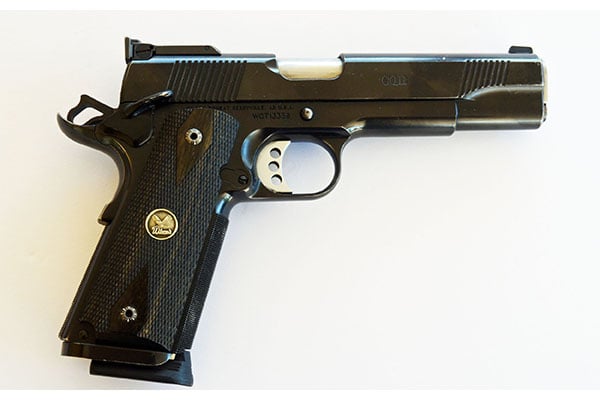
Last Updated on
By Mike Searson
On the topic of firearms that will never be sold for any reason, the author actually has a sub group within that category: 1911 style pistols.
Over the course of my life as a shooter I have had close to 20 different 1911 pistols either in my collection or issued to me by the US government as one of Uncle Sam’s Misguided Children. That last part is literal as I spent the ages of 17 to 19 as a US Marine and the government saw fit to give me machine guns grenade launchers and a few 1911s to play with.
There are currently 6 in my hands including two that I built, one that was made in 1917 for World War 1 and one of Bill Wilson’s custom designs: a Wilson Combat CQB. The latter is the subject of this article.
Originally built for the US Army in its namesake year the 1911 or 1911A1 has been used by the armies and navies of close to 70 countries. At the latest count there are approximately 50 companies from Colt to Sig Sauer churning out a version of this classic design.
Built to perfection
Wilson Combat’s CQB is a custom built 1911-A1. Every part on Wilson’s CQB is hand fitted by Wilson’s gunsmiths and the pistol ships with not only a custom soft case and a manual but a build sheet that lists the name of all the gunsmiths who worked on the particular pistol with a breakdown of the wok they did.
This not only verifies that all specifications are met, but serves as factory documentation in the event that the CQB is ever used in a self-defense shooting. The shooter can prove that the pistol left the factory in that configuration. You also get a blue plastic barrel bushing wrench and a cleaning kit to clean and maintain your Wilson.
Our CQB has a 5″ match grade barrel and the pistol is coated in Wilson’s Armor-Tuff coating. This finish protects the external parts from the elements and acts as a form of solid lubricant because it contains molybdenum disulfide.
The author has had extensive experience with this formula in coating bullets and can attest to its superb characteristics of countering friction between metal parts. It is likewise highly resistant to solvents, various acids and exceeds DoD (Department of Defense) standards with regard to immersion in jet fuel, salt water, trichloroethylene and can withstand temperatures from -250 degrees to 500 degrees. As a coating, there are better ones on the market and its wear is showing after 10 years of hard shooting. Friends have advised me to Cerakote the pistol, but worn finish on a faithful companion lends character.
When it came to sights, I opted for the fully adjustable target version (Bo-Mar) with tritium inserts over the fixed variant. I went with Wilson’s “bulletproof” ambidextrous safety, which is the best ambi-safety I have seen in over 25 years of playing with 1911s.
The front strap features 30 lines per inch checkering and the grips are hardwood with double diamond checkering and Wilson Combat medallions. These two features simply make the CQB melt in the hand for a secure hold. Wilson offers other grips in various materials such as G-10, but the feel of hardwood stocks always seems just right on a 1911.
The 3lb trigger and short reset make this one of the fastest shooting pistols this side of a Glock 18. I consistently shoot 1” groups at 50 feet, and when my eyes were younger, I could push that a bit further.
I was once told that using it in a match was like cheating.
Not All Are Perfect
I did have an AD with this pistol a few years back. Actually it was kind of two.
The first time was after a trip to a little state just to the west of Nevada where carrying a loaded handgun frightens the local citizenry. Not caring to get arrested for unlawful carry, I unloaded the pistol and carried it in a lock box until I got to my hotel, where I kept it loaded for protection.
I unloaded it for the return trip and when I was back in free America I loaded it up as a carry piece. When I dropped the slide, the hammer followed. There was no bang, but the indented primer shocked me that there was no ignition of the primer. Had this been any other 1911 I would have fixed it myself, but this is a $3000 handgun. Wilson should take care of it. A phone call to Berryville, Arkansas, got me a call tag and away my pistol went for about a month.
It came back with a few new parts at a modest fee and seemed to be running again. Two weeks later, I was finished cleaning after a range trip and loading up again for carry. When I dropped the slide, the hammer followed. This time it went off and I got a perfect 0.45” hole in the bedroom floor with a perfectly expanded 200 Grain Gold Dot flying ashtray lodged in the subfloor.
I may have been a bit less cordial with the good folks in Berryville, Arkansas, this time, but again the pistol was whisked away by the funny little man in the brown shorts and back to me in less than a week with a phone call from the shop’s foreman at the time. There was no charge and the pistol has been running like a top in the 5 years since then.
Why keep it
The pistol is freakishly accurate. I cherish accurate pistols over accurate rifles and it epitomizes everything that a working 1911 should be. A few gun toting buddies told me to get rid of the piece after the 1.5 AD’s. Accidental discharges occur when there is a mechanical failure. In the case of a 1911 that has had 10s of thousands of rounds down its barrel, there is a lot of wear on small parts.
These hand fitted parts need to be inspected and changed every once in a while. Selling this pistol because of what happened would be like selling a classic Corvette because it threw a rod when you went 100,000 miles without changing the oil.
Had someone been killed or injured as the result of the AD, I might be singing a different tune, but the fact is the CQB is so accurate and reliable, it may be one of two pistols placed in my grave for the last ride to the pearly gates.


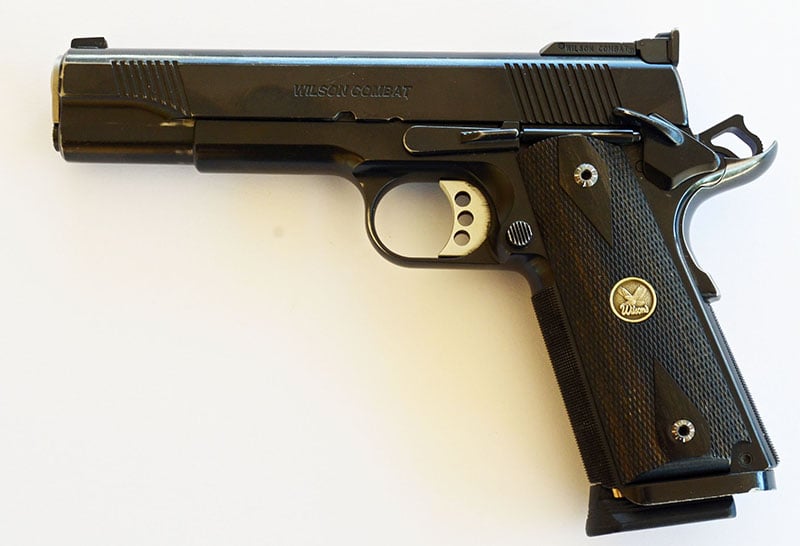
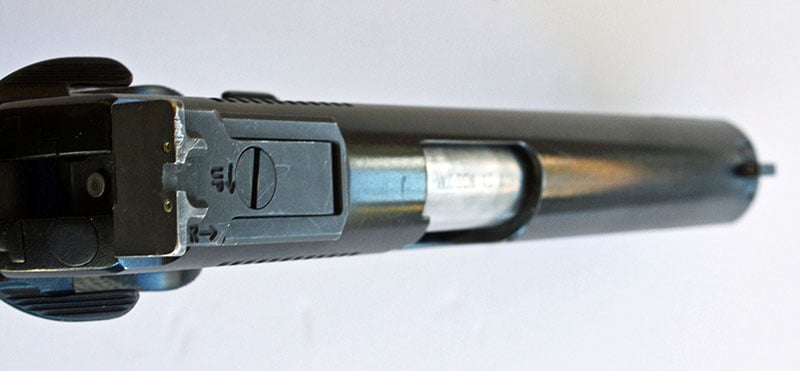
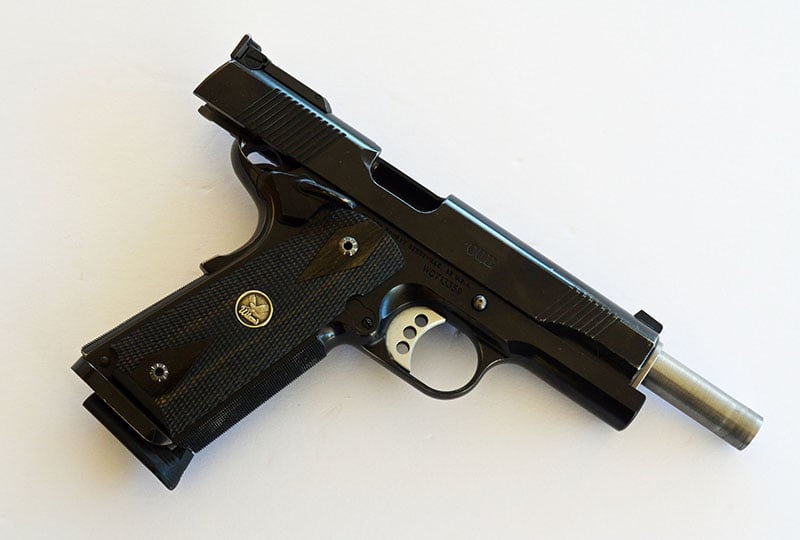
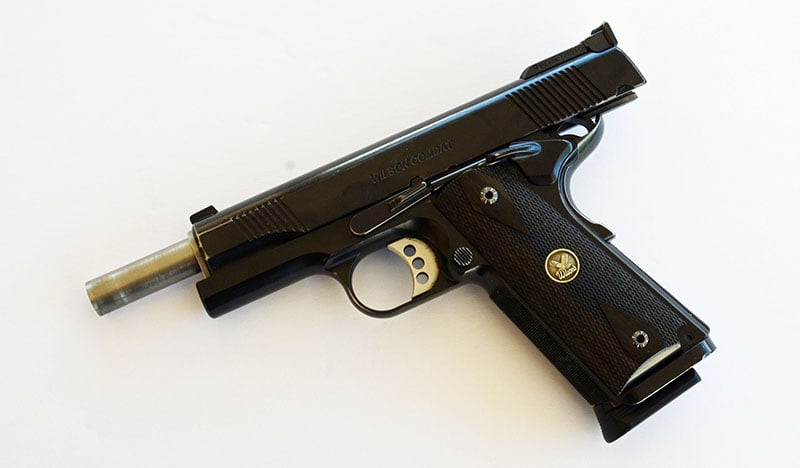
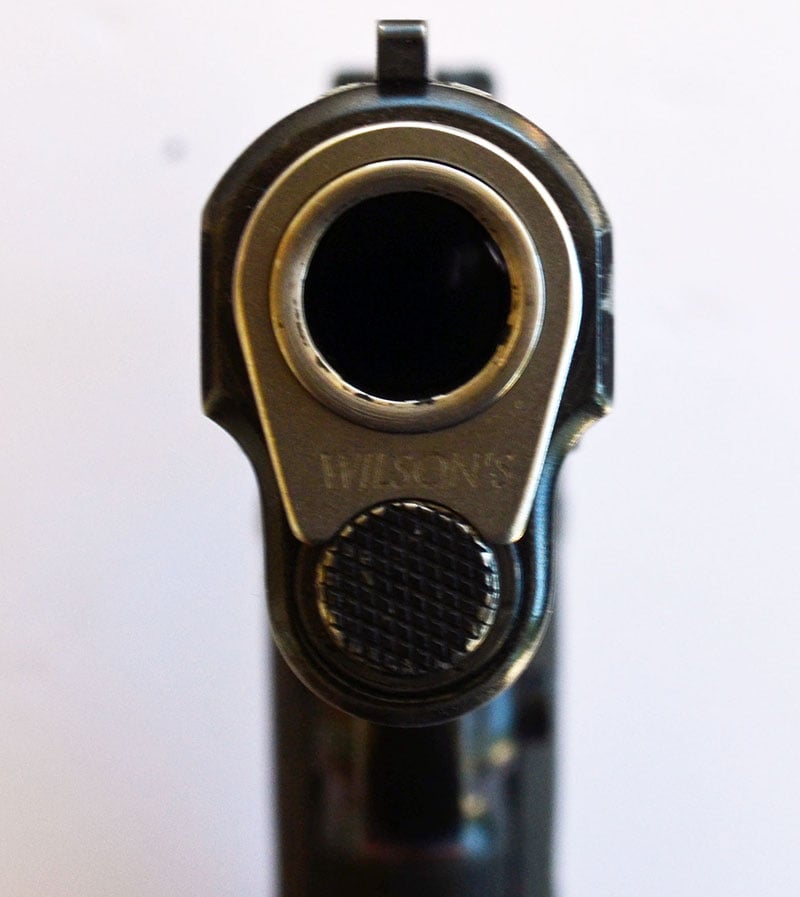



Leave a Reply